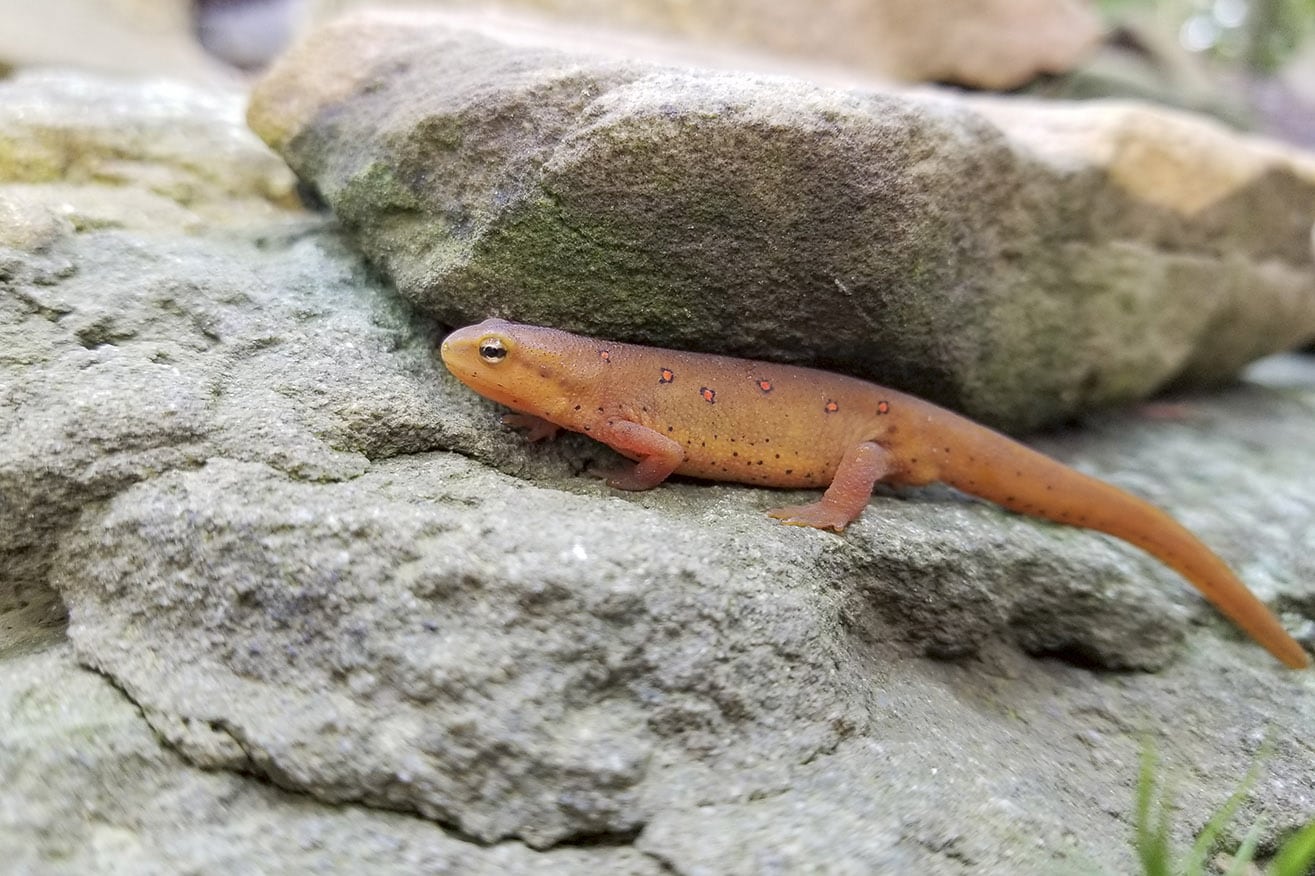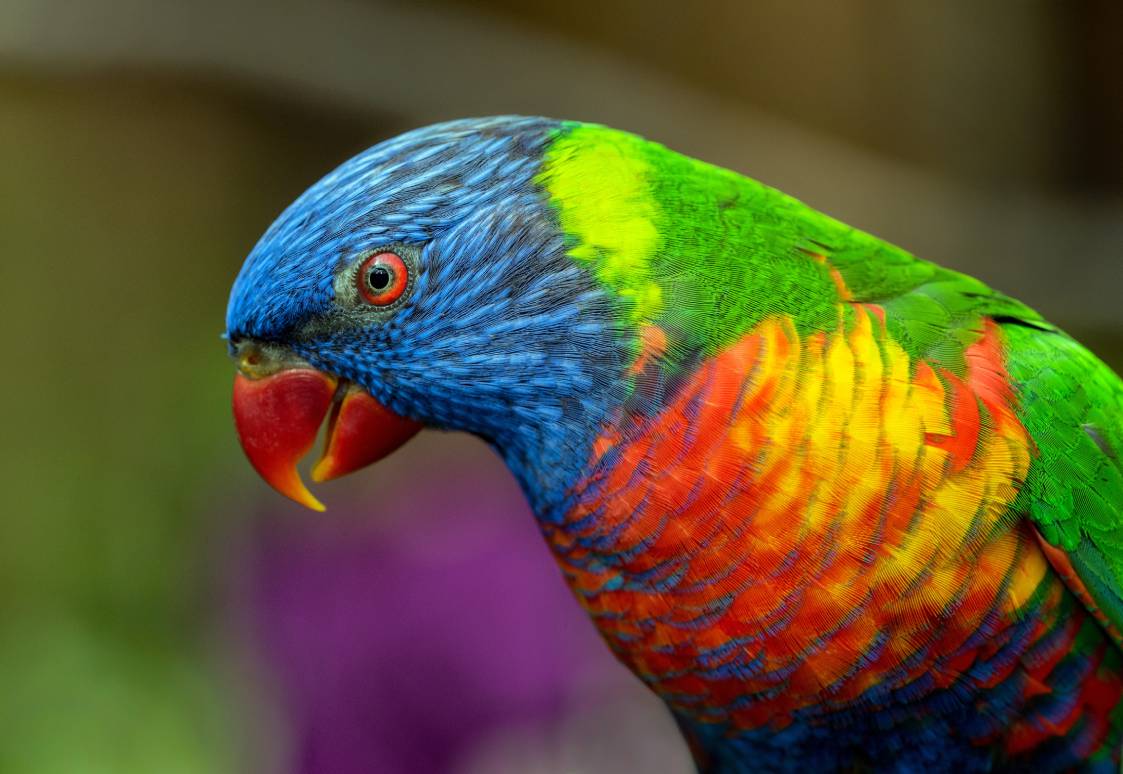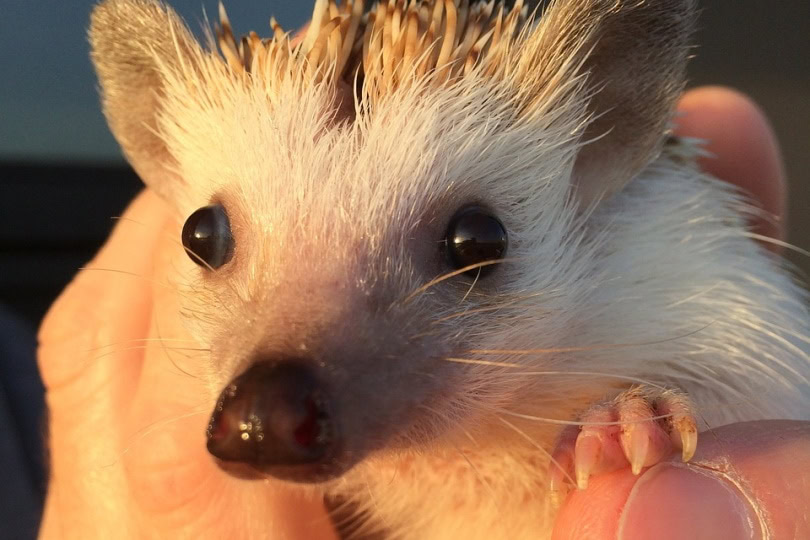Click to Skip Ahead
If you’re looking to expand your aquarium, you may have stumbled across Eastern newts in your search. These adorable amphibians are a popular pick among aquarists. If you think they could be interesting pets, keep reading to discover why you’re right.
Keep in mind that newts are mildly toxic and don’t make the best tank mates for other species. We will discuss the details about keeping newts so you know what to expect and if they’re compatible with your setup.

Quick Facts About Eastern Newt
| Species Name: | Notophthalmus viridescens |
| Family: | Salamandridae |
| Care Level: | Intermediate |
| Temperature: | 40 to 70 degrees Fahrenheit |
| Temperament: | Docile |
| Color Form: | Yellow, brown, red, black |
| Lifespan: | 12 to 15 years |
| Size: | 5 inches |
| Diet: | Carnivorous |
| Minimum Tank Size: | 10 gallons |
| Tank Set-Up: | Aquarium/enclosure |
| Compatibility: | Experienced owners |
Eastern Newt Overview
In the salamander family, the Eastern newt is a small amphibian that inhabits ponds, streams, and lakes throughout most of North America. These interesting creatures undergo three life phases: larvae, juvenile or “eft,” and adult.
Notably, these amphibians are aquatic during the larvae and adult phases, but during the eft stage, they have a terrestrial period of 2-3 years where they live on land.
Once the eft stage is complete, they return to the water for good. Even in their eft state, you shouldn’t handle them. Eastern newts have a toxin in their system that triggers when they’re stressed, which can make you very ill.
For this reason, they are also incompatible tank mates for other amphibians.
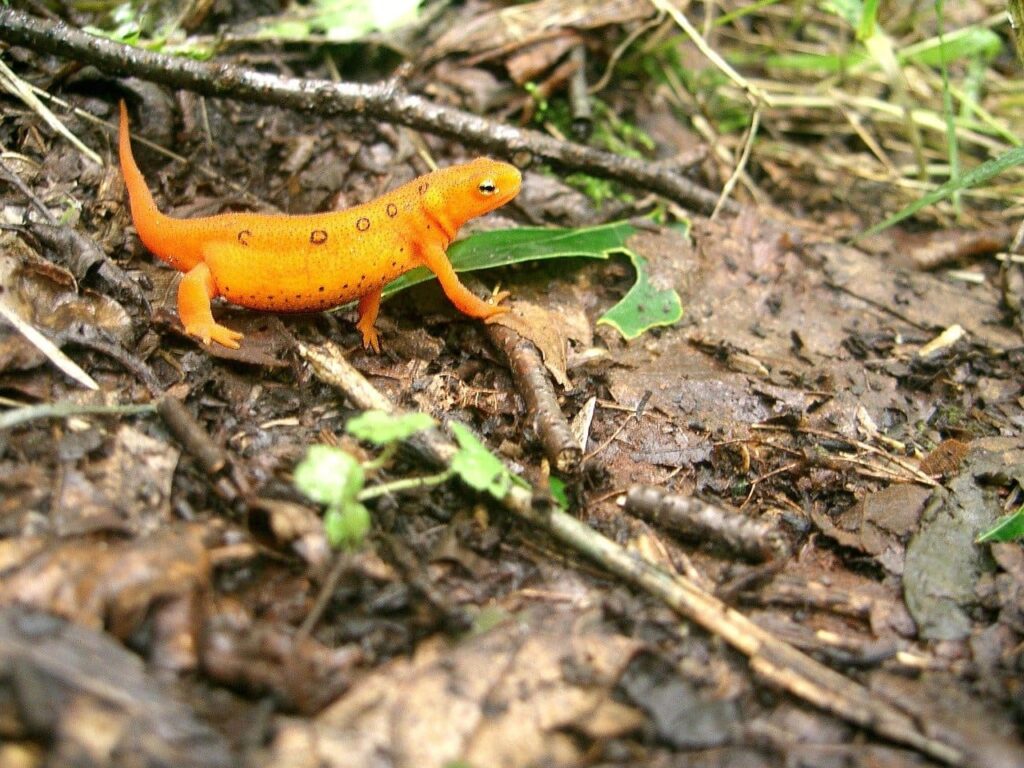
How Much Do Eastern Newts Cost?
Eastern newts are relatively cheap in comparison to some other aquarium life. Depending on the subspecies, you can pay anywhere from $12 to $100 per newt.
Depending on where you live, you might even be able to find one in the wild. However, we recommend buying from a breeder to get healthy, long-lasting specimens without detrimental health conditions.
Typical Behavior & Temperament
Don’t let their cute and cuddly looks fool you—you shouldn’t handle your newt unless it is vital. They may look innocent, but they carry toxins that could make you very sick. Aside from their toxicity, they dehydrate quickly because of the salt on your skin.
Essentially, these amphibians are strictly look-but-don’t-touch pets. You can admire their antics, swimming in perfectly timed, even flows. They add beauty and character to any aquarium, though you must be careful pairing them with other amphibians.
Keep in mind that newts are slower to feed than some potential tankmates, so give them first dibs to ensure proper nutrition.
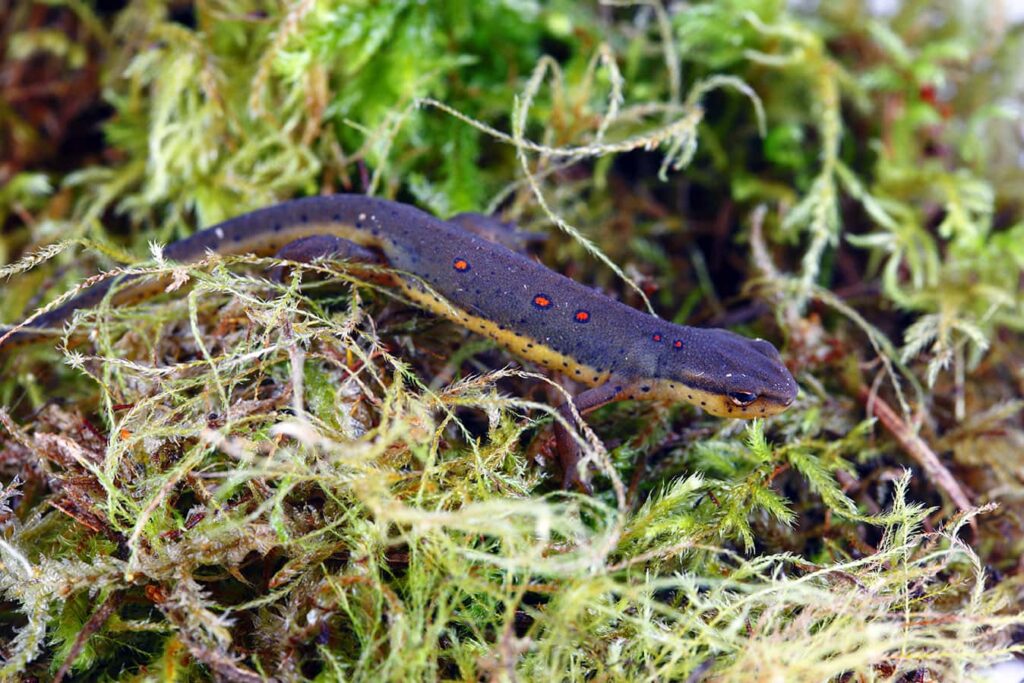
Appearance & Varieties
Though newts carry a specific size and structure, there are subspecies of eastern newts that you can choose from.
These include:
- Red-Spotted Newt—Bright red spots with black outlines
- Central Newt—Shimmery, solid colors, some variation possible
- Broken-Striped Newt—Broken stripes, prominent red stripes
- Peninsular Newt—Olive-colored, no red spots

How to Take Care of Eastern Newts
Newts live in swampy, wet areas in booming ecosystems. In captivity, you must simulate the environment they enjoy in the wild.
Habitat, Tank Conditions & Setup
Newts require the right environment to thrive, so you must ensure you can accommodate them. After the first few years, once their eft stage passes, they need to transfer from land to water without issue.
Enclosure
The necessary enclosure changes depending on the newt’s life stage. Newts in the eft stage need adequate land resources, but once they reach adulthood, they need an aquarium. An adult newt needs at least a 10-gallon aquarium. Eft newts require a semi-aquatic enclosure with access to water, but they will need land while their lungs are in full development stages.
After a couple of years in their eft stage, they will begin developing gills again and return to the water. The most preferred type of water for the aquarium is pure spring water. You can also use tap water, but you must add dechlorinating tablets first.
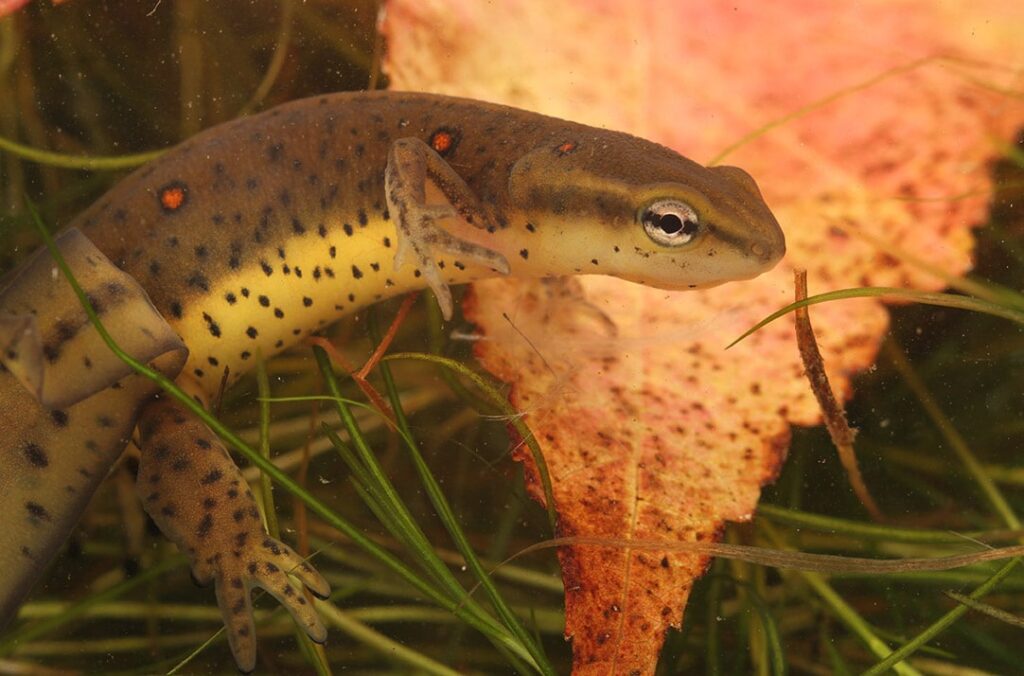
Substrate
Newts need bedding of organic potting soil or coconut fiber that retains adequate moisture during the eft stage. They should always be offered large leaves for shelter. As babies or adults, you can have bare or gravel bottoms in your aquarium.
Hides
During their terrestrial phase, newts require safe places to hide in the enclosure. They prefer to be out of sight and safe. You can get logs, ceramic pots, and plants to keep them protected.
Temperature
Eastern newts are cold-hardy, so they thrive in room-temperature water without heating. They can stand water temperatures as low as 40 degrees Fahrenheit.
Lighting
Eastern newts need lighting that mimics natural daytime/nighttime cycles. If they are near a window, they’ll have adequate sunlight during the day.
However, be careful of drafty areas during cold months that can lower the water temperature too much.
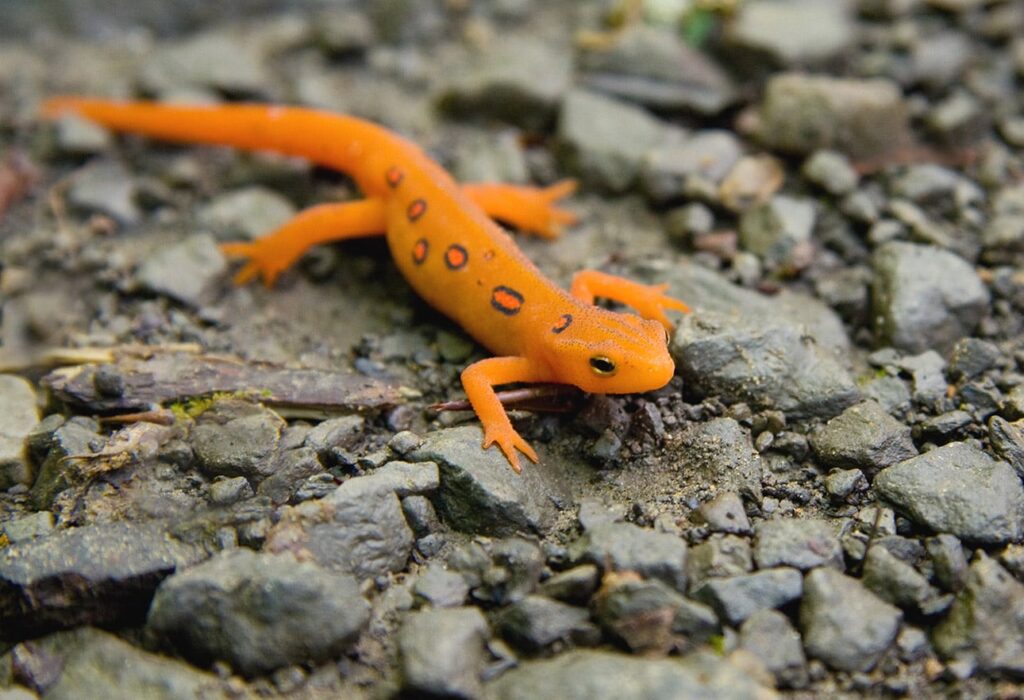

Do Eastern Newts Get Along With Other Pets?
Newts do well with most tankmates of their kind. They are docile and agreeable with one another. However, they are toxic to other amphibians, so they should never live together. Some fish are compatible with newts, but they must be cold-hardy and must not be voracious eaters.
Newts eat slowly, so if there is ongoing competition for food, they might not get the adequate nutrition they need.
Some compatible mates in aquariums with newts include:
- Topminnows
- Rainwater killifish
- Snails
- Guppies
Avoid other amphibians at all costs.

What to Feed Your Eastern Newts
The newt’s diet is critical to ensuring growth and development. Adult newts are carnivorous and eat insects primarily, but they will sometimes eat fish eggs.
In captivity, you can feed your newt:
- Earthworms
- Commercial foods
- Brine shrimp
- Red worms
Note: Never feed your eastern newt wild-caught insects, as they can harbor disease and bacteria.

Keeping Your Eastern Newt Healthy
Before you adopt an Eastern newt, it’s best to locate an aquarist or professional who can help you. If your newt is sick or something of concern develops, you need that extra layer of protection to keep them safe. But generally speaking, they are hardy creatures, as we mentioned.
Breeding
Eastern newts breed and lay their eggs in water. The breeding process occurs in adulthood when the eft stage has passed. They breed during late winter to early spring. Fertilized eggs hatch within 3–5 weeks.
In the late summer months, baby newts begin to absorb gills and develop lungs for their eft stage. If you breed newts, you will need a separate enclosure at this time to allow them to live on land.

Are Eastern Newts Suitable for You?
If you think an Eastern newt sounds like a prize-winning pick for your aquarium, you can find them at local aquarists near you. Remember that newts can be toxic to other amphibians, so make sure that you house them with compatible mates.
Remember not to handle your newt unless it is necessary. Eastern newts get very stressed and might release a toxin through their porous skin, so keep handling to a minimum.
Featured Image Credit: Merlin Halteman, Shutterstock
